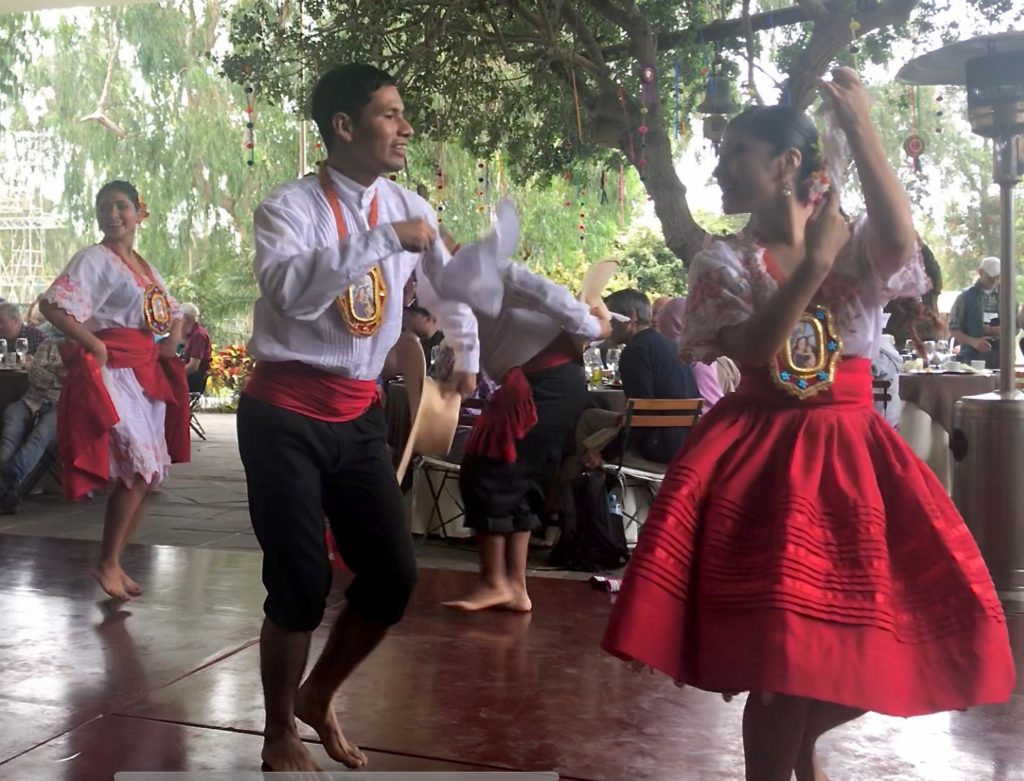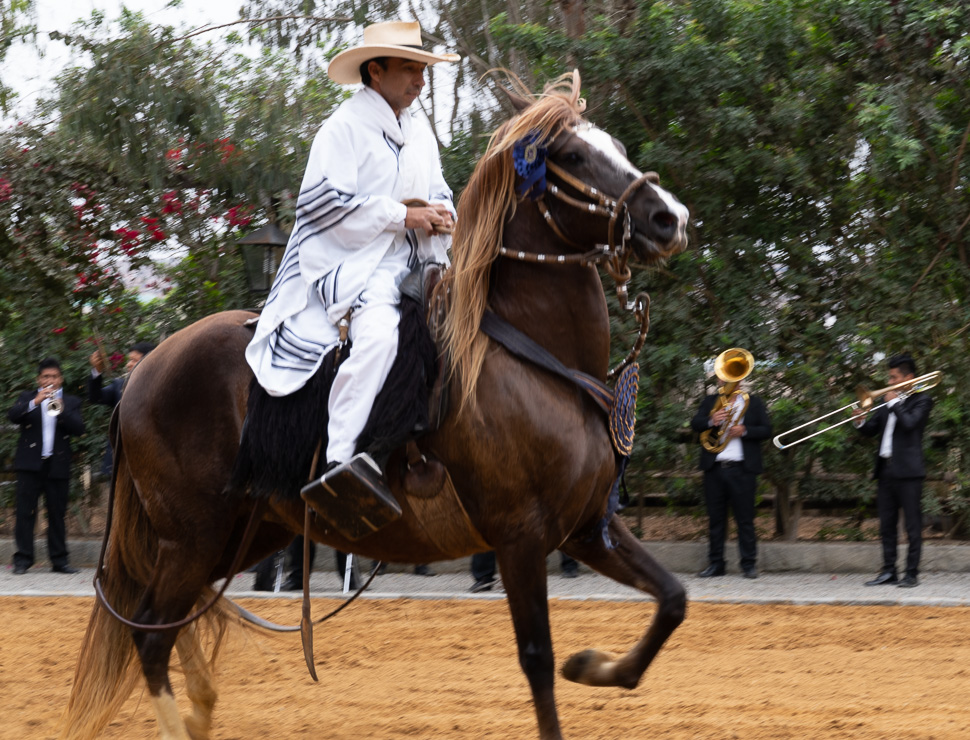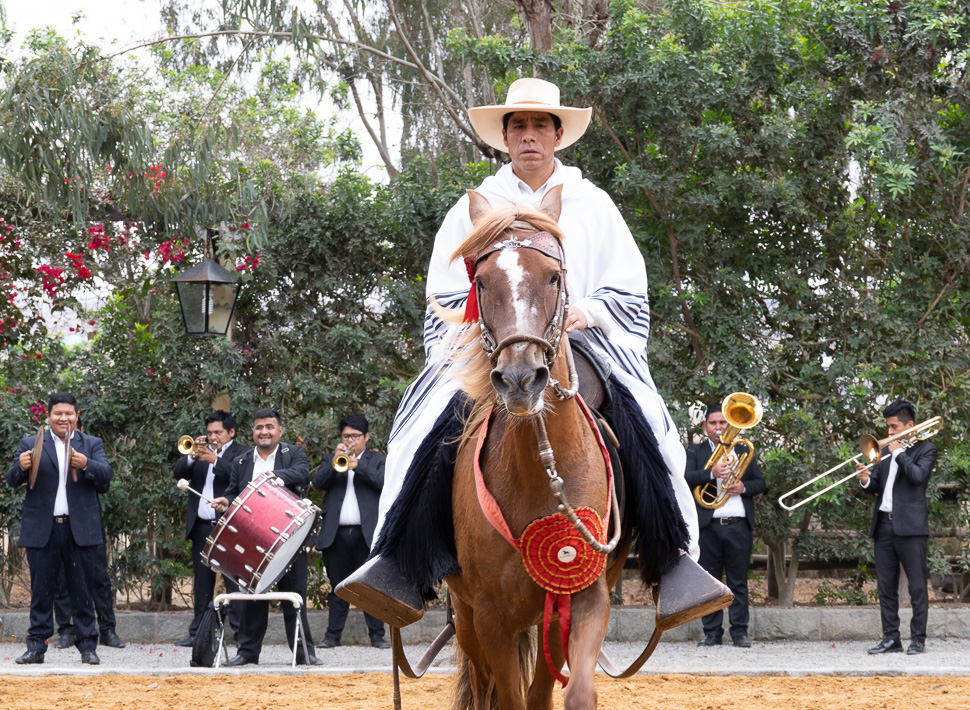March 13, 2020
I’m going to post stories and descriptions of my thoughts and adventures this year. Spring seems like a good time for new growth and the birth of new ideas. Please check back to see how this project develops.
This first post reviews a portion of our travels last summer chasing the total solar eclipse that happened in Chile on July 2, 2019.
In June 2019 we were just south of Lima, Peru visiting the Hacienda Mamacona. It is a beautiful hacienda that includes a horse stable for the elegant Peruvian Paso Horse. The hacienda features displays of the traditional customs still practiced by the old families linked to country life. We saw shows featuring folkloric music and dance, the Peruvian Paso Horse, and a buffet of Criollo food characterized by a mixture of spicy flavors and a touch of exotic hot peppers.

The love of music and dance was woven throughout the entire celebration. The traditional music was enchanting and the costumes were colorful. The dances were exciting and aerobic. Even the horses and their riders moved to the music with dance steps and rhythmic movements.

The Rizo Patron family owns the hacienda where they breed the Paso in their stables. The horses are incredibly beautiful. Medium sized with an elegant yet powerful build the paso has a lustrous coat that comes in many colors including chestnut, black, bay, brown, buckskin, palomino, gray, roan, and dun. We saw a wonderful demonstration of the grace and fitness of these horses with their riders. Horse movements are classified in two groups; “natural” gaits and “ambling” gaits. The natural gaits are walk, trot, cantor, gallop, pace. The ambling gaits have at least one foot bearing full weight at any time and are referred to colloquially as “singlefoot.” The American fiddle tune “Single-Footing Horse” by Arthur Smith is named after this gait. Not all horses can perform an ambling gait and special training may be required. The Peruvian Paso, however, has this ability in its DNA as a hereditary trait.

The Peruvian Passo is a national symbol for Peru. The breed is protected by the peruvian government by decree and has been declared a Cultural Heritage Treasure of the Nation. It is a breed of light saddle horse known for it’s naturally smooth four-beat gait called the paso llano. The elegance of this gait is more like dancing. The grace and beauty of these movements are genetically inherited by the Paso, and young foals can execute the graceful movements within hours of their birth. Special training is required for other breeds to perform an ambling gait such as the paso llano (“even step”), or the sobreandando, which is faster and closer to a cantor.

A trainer brought out a young foal for us to see. A beautiful young example of the Peruvian Paso.

The characteristic smooth gait was used to cover long distances in a short amount of time without tiring either the horse or the rider. The movements are natural to the Passo and do not require extensive training since they are genetic. The rider experiences none of the vertical bouncing that is felt in the trot and the ride is very stable. There are always two, and sometimes three, feet on the ground at all times. This means the rider feels no strain or jolt.

Having the ability to move with gentle grace and ease allows the horse and rider to actually dance in close proximity with a beauiful partner. It is no exaggeration to say that the audience watching such a performance is spellbound.

The energy is high, uplifting, and whimsical.

Happy one-step! Happy two-step! Happy fox-trot! Dance!

Musician, dancer, horse, rider, and audience become one in almost mystical union.

Amazing! Wonderful! Happy!

Horses appear in Paleolithic cave art as early as 30,000 B.C. But, humanity’s dance with the horse probably dates to 4000 B.C. when evidence indicates the horse was domesticated. Our relationship to the horse is deep and mysterious. There is love, respect, and helpful interchange between man, woman, and horse. At the hacienda, I think the horse enjoyed the music as much as I did! The musicians definitely enjoyed themselves.

The band played during the whole celebration.
Horses arrived in South America during the Spanish conquest starting with Pizarro in 1531. The Peruvian Paso traces its bloodstock back to Spain, Panama, and other areas of Central America. Smooth gaited horses are called Palfreys and they existed in the middle ages. Some of the early breeds were the Jannet, known for its ambling gaits, the Barb, known for its strength and stamina, and the Andalusian, known for its style.

You can hear Arthur Smith play the fiddle tune “Single-Footing Horse” here.

Horse, rider, and welcoming musicians.

The horse is a universal symbol of freedom and power. The white horse symbolizes the balance of wisdom and power. The horse has helped us build our civilization. Now the 2020 Porsche 911 has 540 horse power. It’s just kind of amazing.

The Avatar of the Age rides His white horse out of the sea. All Hail the goer!